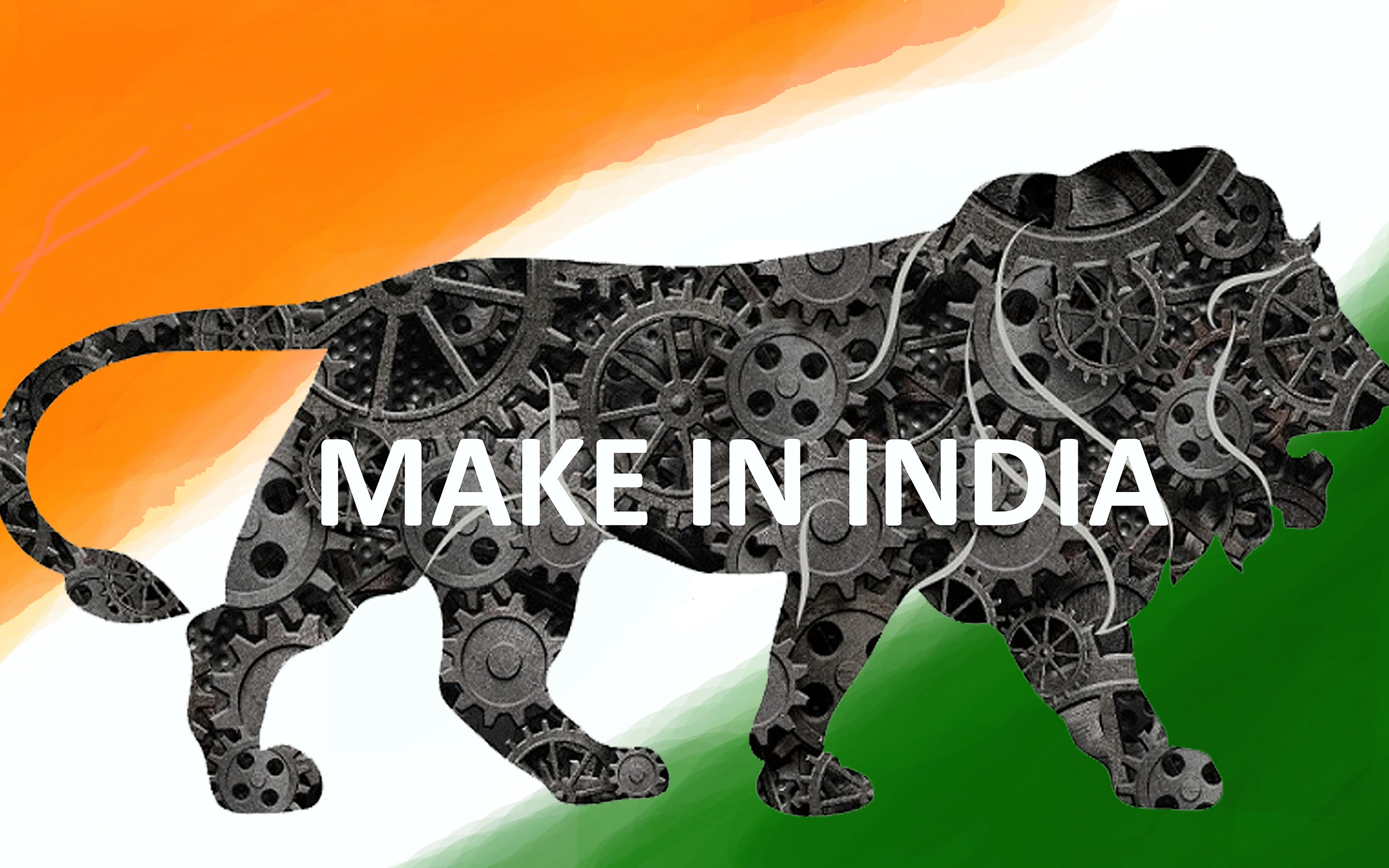 |
||||||||
| September 20, 2017 | ||||||||
| Field Report - Dryer can warm-up guidelines |  |
|||||||
|
· Subscribe to Ahead of the Curve · Newsletters · Ahead of the Curve archived issues · Contact the Editor
|
‘Make in India’ vs. Making Paper in India: A Balancing Act? This is an excerpt from an article originally published in the Jun-Jul 2017 issue of Paper Mart India magazine (www.papermart.in). With the incessant and nagging challenges of raw material availability, adherence to environmental norms, and competing with swiftly increasing cheaper imports, India’s pulp and paper industry has the arduous target of creating 1,000,000 tonnes (metric tons) of integrated capacities in pulp, paper, and paperboard to meet consumption demands—a daunting task without conducive policy environment. Does the Indian government’s “Make in India” campaign take stock of challenging manufacturing conditions in this vital industry? The editors of Paper Mart India interviewed experts in India’s growing pulp and paper industry to learn more.
Make in India Efforts are geared to both augment domestic or indigenous manufacturing and to open foreign direct investment (FDI) in a very rigorous manner for foreign manufacturing companies to come to India. Moreover, tremendous employment generation potential has also been envisaged as part of Make in India. The government hopes to create 100 million new jobs by 2022. Whereas some problems cut across the industry, many of them are industry-specific and it is, therefore, a must that structural and regulatory reforms should keep these specific challenges in mind to make the initiative really successful. Let's see how the Indian paper industry and its challenges may be integrated into the Make in India initiative by recording some views of the industry. Industry ‘Well-Positioned, With Proper Policy Backing’ Paper Mart: What does the government’s “Make in India” campaign mean for the Indian pulp and paper manufacturing sector? Mehta: A picture of the demand for paper in India would provide a better perspective. India's consumption of paper is expected to increase from the current 16 million tonne per year (mtpy) to at least 24 mtpy by 2024-25, assuming business-as-usual scenario, and could be even higher. Out of current consumption of 16 mtpy, over 2 mtpy is being imported. So over the next eight years, about 1 mtpy of integrated pulp, paper and paperboard capacity must be created in India on an annual basis over current capacity to meet the growing demand. More so, as the Indian pulp and paper industry provides direct employment to 500,000 people, and indirectly to 1.5 million, our industry would also be a vehicle to carry the mantle of Make in India. So, from the paper industry point of view, there is definitely a big case for Make in India, especially when the demand in the developed world is waning. PM: The pulp and paper industry has become tremendously technology intensive due to huge environmental compliance pressure. Do you think the government could do more to facilitate the technology infusion in the industry by relaxing norms regarding machinery and technology imports? Mehta: In the new paper machines that have come up over the last few years, we are already seeing broader widths, faster speeds and more automation and sophistication. Going forward, this trend will get further accelerated because of increasing competition as also the need to integrate the Indian industry in line with global trends. Moreover, with the industry in the developed world reaching saturation, it is an opportune moment for us to seek the better technologies available with them and move up on the overall technological radar. Here, government-to-government initiatives will definitely give a fillip to the overall process. However, nothing visible has been done by the Government to facilitate the industry. PM: A policy framework on its own cannot be successful unless a broader ecosystem of robust logistics and supply chain system is in place. What does the Indian paper industry feel about this aspect and what improvements does it expect? Mehta: Indian paper manufacturers, over the last 25 years has been undertaking farm-forestry efforts at their own ends, and also invested huge amounts to upgrade and implement clean technology, product quality, etc., with more investments in the pipe line. A concerted national policy is required to reap the full benefits. While a National Agroforestry Policy was announced in 2014, it seems a long way from being actually implemented. This could have strong backward linkages with the farming community, and also help the government in its quest to double farmer's income over the next 5-6 years. It would also help in greening India and would increase forest by 1 percent in five years time, if 2.5 million hectares is planted out of the degraded forest land, in addition to creating huge employment for tribal people. Given the proper policy backing, and provision of a level playing field vis-à-vis imports, the paper industry is well-positioned to take forward the Prime Minister's “Make in India” initiative. No Specific Policy Movement for the Paper Industry PM: Some have complained about lack of movement in the pulp and paper sector and that the industry has not been directly addressed through the program. Is this true? What bottlenecks would the industry wish to see addressed through a policy framework? Bangur: Indian Paper Manufacturers Association (IPMA) has been communicating this with the government for the last two years. Any entrepreneur would like to grow their business and at the end expect a decent ROI. If there is no return on the investment, why would anyone invest? Presently, the industry is coping with two major issues. The first concern of the industry is the cheaper imports coming from the ASEAN countries that are putting pressure on our current sale prices and production. Industry is not able to get decent returns on investments in the existing capacity; that is why building up new capacities is absolutely out of question. The second challenge is the raw material issue, which hasn't been addressed properly. It is now high time that the government addresses these issues seriously. Sadly, lack of a concrete plan on the procurement of raw material is restricting the growth of the industry as on one side people talk about the paper industry cutting trees and at the same time the industry doesn't get good supply of raw material at competitive rates. The industry has an impaired supply chain and there is no visible backward integration happening in terms of industry-owned plantations. The industry does not have proper linkages for raw material support, which the big giants in our neighboring countries have. For for this industry to be sustainable, the government must frame policies in favor of local manufacturers. PM: The pulp and paper industry is highly capital intensive. Do you think that relaxed credit norms also constitute, among other things, the ease of doing business? Has the government done enough in this direction? Bangur: India’s pulp and paper sector has been highly capital intensive and will remain so in the future. Of course, access to cheaper source of finance would be a major relief to the industry for making large investments. In the past, the paper industry has tapped cheaper sources of finance for funding the capital expansion programs, in the form of loans whether domestic or overseas. Yes, we are capital intensive and there are many facilities given to the Indian entrepreneurs where we can borrow money from outside. Our government can look into having easier/flexible norms for selected corporates having healthy cash flows to get access to cheaper loans from overseas for their Capex/ working capital requirements. The Paper Industry is ‘Not a Focus Area’ Paper Mart: What does the government’s “Make in India” campaign mean for the Indian pulp and paper manufacturing sector? Krishna: In my understanding, pulp and paper is not a focus area for the government. India is resource-starved and the industry needs resources. The current situation does not enable the industry to rise to world standards and hence it is unlikely that the government would provide due recognition. PM: Some have complained about lack of movement in the pulp and paper sector and that the industry has not been directly addressed through the program. Is this true? What bottlenecks would the industry wish to see addressed through a policy framework?
Krishna: In my understanding, an environmentally fragile country like India needs to be careful when creating a macro-economic climate for a certain industry. There would be few policy recommendations. First, we need to incentivize waste paper collection and maximize the same. Segregation at source needs to be ensured. Second, we need to avoid burning of agro-residues, whether straws or bagasse; they are a poor fuel and a better fiber. They need to be made available to the industry. Third, we need to promote agro forestry, provide industry with degraded forests, and enable soft loans to farmers for social forestry. Finally, we need to invest in technologies that enable utilization of various fibers that get wasted, such as jute, banana, hemp, and rice straw. VK: The priority needs to be to protect the environment; however, the approach needs to be more collaborative rather than instructive. There needs to be a long-term strategy created along with industry, technologists, and policy makers. It needs to list the targets along with technologies and enabling finance for the same. There needs to be a cohesiveness of thought and implementation. The board needs to play the role of an enabler and facilitator rather than just of implementer. Our joint focus needs to be the environment and we need to embrace technology from all over the world. We cannot afford to adopt a protectionist attitude.
For a modest investment of $174, receive more than US$ 1000 in benefits in return. |
|||||||
 |
||||||||

